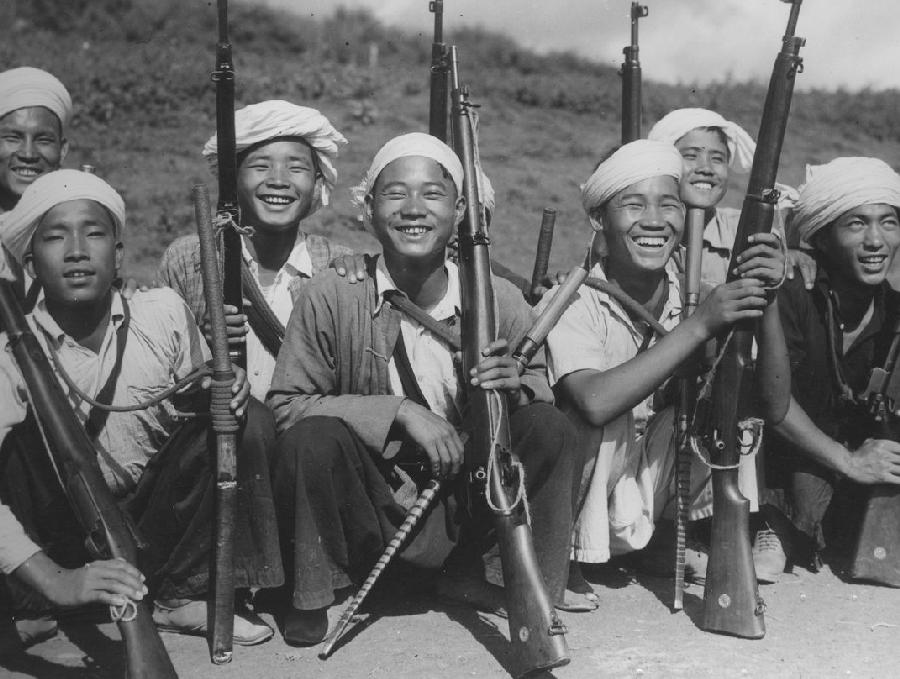
World War II: Burma--British Defenses (1941)

Figure 1.--These Burmese signed up to fight with the British as the Japanese invasion was about to begin. The photograph was dated January 3, 1942. They brought their own rifles and swords. We are unsure about their ethnicity, they may be Kachins or Karens. The British defense of Burma was complicated by concerns over the political reliability of the Burmese and the Japanese success in convincing some politically active Burmese that they would support Burmese independence rather than ruthlessly exploit the country as a part of it expanding empire.
|
|
Britain like America realized that the Japanese were preparing for war, but did not know where and when they would strike. The British hard pressed by the Germans in the Middle East had only limited resources for the upcoming Pacific War. The top priority for the British was Singapore which was the link-pin for the British defensive position in Southeast Asia and the Pacific. Burma was the lowest priority for a theater that itself was at the bottom of the British priorities. British plans to defend Burma were incomplete. The Burmese themselves were not consulted and had little motivation to fight the Japanese who had shown apparent sympathy for an independent Burma. Neither Britain nor the United States was prepared to commit significant forces to defend Burma. It was, however, not just a matter of men and material. The British colonial administration did not take even the most basic steps to
prepare for invasion like establishing military control of the rail lines. The British had only two divisions to defend Burma, the Indian 17th Division and the 1st Burma, another Indian Army unit. There were also two under-strength and poorly equipped regular British battalions. Local Burmese forces were a problem. They included police, Burma Frontier Forces, and the Burma Rifles. The Burma Rifles had been formed by the British during World War I. They were originally composed of Burmese, Karens, Kachins and Chins with some Gurkhas. The British stopped recruiting Burmese (1927), despite objections from experienced officers. British officials claimed that the Burmese did not make good soldiers. Probably the major concern was political reliability. The decision to stop recruiting Burmese alienated the regiment from the Burmese population, which began to see the regiment as just another part of the British colonial regime. The British as the situation deteriorated resumed recruiting Burmese, but the local perceptions were permanently affected. The British forces in Burma lacked any appreciable air or naval contingent. Nor did British commanders accurately perceive potential Japanese strength, capabilities, or possible attack routes. The British belatedly rushed forces to Burma and some had begun to arrive just as the Japanese had launched their offensive and were approaching the all-important port of Rangoon.
CIH -- WW II

Navigate the CIH World War II Section:
[Return to Main Burma World War II page]
[Return to Main World War II page]
[Return to Main World War II country page]
[Return to Main Burma page]
[Biographies]
[Campaigns]
[Children]
[Countries]
[Deciding factors]
[Diplomacy]
[Geo-political crisis]
[Economics]
[Home front]
[Intelligence]
[POWs]
[Resistance]
[Race]
[Refugees]
[Technology]
[Totalitarian powers]
[Bibliographies]
[Contributions]
[FAQs]
[Images]
[Links]
[Registration]
[Tools]
[Return to Main World War II page]
[Return to Main war essay page]
Created: 8:30 AM 1/26/2014
Spell checked: 8:11 PM 1/26/2014
Last updated: 8:11 PM 1/26/2014



